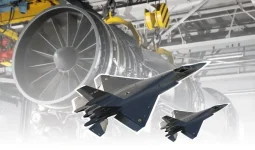- Views: 3K
- Replies: 22
In a significant move to enhance India's air combat capabilities, Russia has formally offered its advanced Kh-69 stealth cruise missile to be integrated with the Indian Air Force's (IAF) fleet of Su-30MKI fighter jets.
This offer is part of a broader effort to deepen the long-standing defence partnership between Moscow and New Delhi and aims to equip India's primary air superiority fighter with a potent long-range strike weapon.
Recent military engagements have highlighted the critical need for robust stand-off weapons, which allow aircraft to strike targets from outside the range of enemy air defences.
While the IAF's French-made Rafale jets, armed with SCALP cruise missiles, have demonstrated considerable effectiveness, a need was identified to bolster the strike power of the Su-30MKI fleet.
The primary weapon for this role, the BrahMos-A cruise missile, is highly powerful but its large size and weight limit the number of missiles that can be carried.
The Kh-69 is a modern, subsonic cruise missile designed with stealth features to minimise its radar signature, allowing it to penetrate heavily defended airspace.
Originally developed for Russia's new-generation Su-57 stealth fighter, the missile has been proven in combat, with reports confirming its use in the conflict in Ukraine.
Its design allows it to fly at very low altitudes to avoid detection, and it uses a combination of satellite and inertial navigation systems for precise targeting.
This offer is particularly noteworthy as it provides a direct solution for upgrading the capabilities of the Su-30MKI, which forms the backbone of the IAF with a fleet of over 260 aircraft.
Russian officials have confirmed that the Kh-69, weighing approximately 710 kg, can be fitted onto the external wing pylons of the Su-30MKI without requiring major structural changes. This makes the integration process more straightforward and cost-effective.
The introduction of the Kh-69 would provide the IAF with a strategic advantage by complementing its existing arsenal.
It offers a lighter and stealthier alternative to the supersonic BrahMos-A, allowing Su-30MKI jets to carry a larger number of missiles per mission.
This enhances the fleet's ability to conduct deep-penetration strikes against high-value targets such as command centres and air defence installations.
The potential acquisition of the Kh-69 would create a more versatile and layered stand-off strike capability for the Indian Air Force.
The combination of the heavyweight, high-speed BrahMos, the long-range stealthy SCALP, and the new, tactically flexible Kh-69 would significantly strengthen India's strategic deterrence and aerial dominance in the region.
Negotiations are expected to progress, marking another chapter in the robust India-Russia military-technical cooperation.
Kh-69 Missile Specifications
- Weight: Approximately 710 kg
- Warhead: Up to 310 kg
- Operational Range: 300 - 400 km
- Guidance:Satellite Navigation (GPS/GLONASS) with an electro-optical seeker for terminal guidance
- Launch Platform Compatibility: Su-57 (Internal Bay), Su-30MKI (External Pylons)


